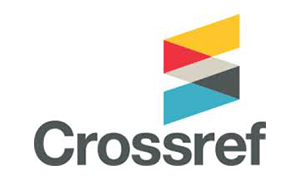Genetic diversity study of pigeon pea (Cajanus cajan (L.) Millsp.) genotypes using SSR markers
Keywords:
Pigeon pea, Genetic diversity, SSR
Abstract
Fifty four SSR markers were employed for the genetic diversity study of 40 pigeon pea genotypes, of which 22 markers were polymorphic with polymorphic information content (PIC) of 0.609 to 0.929. The cluster analysis based on Jaccard’s similarity coefficient using un weighted pair group method using arithmetic averages grouped the varieties into seven major clusters showing reasonable variability that may be exploited for selecting parents for breeding programme. The similarity coefficient among the genotypes ranged from 0.20 to 0.82 indicating wide genetic diversity. Generally distinct phenotypes identified using SSR markers could be potential sources for genotype identification and crop improvement of pigeon pea.
Published
31-03-2015
How to Cite
Romi Oinam, Jhansi Rani K, Anuradha Ch, Jamaloddim M and Swathi
Genetic diversity study of pigeon pea Cajanus cajan L. Millsp. genotypes using SSR markers. 2015. Electronic Journal of Plant Breeding, 6 1, 74-80. Retrieved from https://ejplantbreeding.org/index.php/EJPB/article/view/629
Issue
Section
Research Article
It is certified that:
- The corresponding author is fully responsible for any disputes arising due to the publication of his/her manuscript.
- The article has been seen by all the authors who are satisfied with its form and content.
- The sequence of names of authors in the by-line is as per their relative contribution to this experiment, giving due credit to all scientists who made notable contribution to it.
- All the authors fully understand that inclusion of any other co-authors or exclusion of any co-authors is not possible once the article has been submitted to the journal.
- The corresponding author takes full responsibility for this article.
- The address of the organization where the research was conducted is given.
- The article is exclusive for this journal, and the results reported here have not been sent (and will not be sent during its consideration by this journal) for publication in any other journal.
- Authors agree to abide by the objective comments of referees and do agree to modify the article into a short note as per the recommendation, for publication in the Electronic Journal of Plant Breeding.
- If published in Electronic Journal of Plant Breeding, the copyright of this article would vest with the Indian Society of Plant Breeders, who will have the right to enter into any agreement with any organization in India or abroad engaged in reprography, photocopying, storage and dissemination of information contained in it, and neither we nor our legal heirs will have any claims on royalty.


